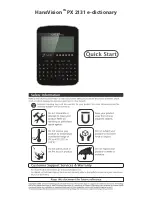
Program mode: EXi
166
For example, to play an ascending chromatic scale, set
the step values to 0, +4, +8, +12, +16, and so on. One
octave up is +48, and two octaves up is +96.
5–1a: Step Sequencer
Mode
[Loop, One Shot]
Loop
makes the Step Sequence loop continuously
between the
Start Step
and the
End Step
.
One Shot
makes the Step Sequence play once from the
Start Step
to the
End Step
, and then hold at the
End
Step
. You can still reset the Step Sequencer from AMS
to make it play again.
Start Step
[1…32]
This sets the step on which the sequence will start. The
Start Step
is important for the
Mode
parameter, above.
You can also modulate it via AMS.
AMS
[AMS Sources]
This selects an AMS source to modulate the
Start Step
.
For a list of AMS sources, see “AMS (Alternate
Modulation Source) List” on page 967.
Intensity
[-32…+32]
This controls the depth and direction of the
Start Step
modulation.
End Step
[01…32]
This sets the last step in the sequence. Once the
sequence reaches the
End Step
, it will either hold there
until the note goes away (if
Mode
is set to
One Shot
),
or loop back to the
Start Step
(if
Mode
is set to
Loop
).
Smoothing
[0…99]
This control smooths the Step Sequencer’s output
signal, creating more gentle transitions between
values. Higher values mean more smoothing.
5–1b: Sequencer Reset
AMS
[AMS Sources]
This selects an AMS source to reset the sequence to the
Start Step
.
To create an effect similar to the per-voice Step
Sequencer’s
Key Sync Off
setting, set this to
Gate 1+
Damper
.
Threshold
[-99…+99]
This sets the AMS level which will make the Step
Sequencer reset. Among other things, you can use this
to adjust the exact point in an LFO’s phase at which the
sequencer will be reset, effectively controlling its
“groove” against other rhythmic effects.
When the threshold is
positive
, the Step Sequencer
triggers when passing through the threshold moving
upwards. When the threshold is
negative
, the Step
Sequencer triggers when passing through the
threshold moving downwards.
Note
: with some LFO shapes, and with faster LFO
speeds, the LFO may not always reach the extreme
values of +99 or -99. In this case, setting the
Threshold
to these values may cause inconsistent behavior, or
may mean that the Step Sequencer doesn’t reset at all.
If this happens, reduce the
Threshold
until the Step
Sequencer triggers consistently.
5–1c: Value AMS Input
AMS
[AMS Sources]
This is the AMS source used for steps set to
AMS
Input
or
AMS Input S/H
.
5–1d: Step Parameters
Each of the 32 steps has its own settings for Value and
Duration.
Value 1-32
[-100…+100, Random,
AMS Input, AMS Input S/H]
-100
through
+100
generate specific levels, just as
you’d expect.
Random
yields a different, random value every time
the step is played.
AMS Input
uses the signal from the
Value AMS Input
source, above. This can change continuously over the
duration of the step. For instance, if you used an LFO
as the
Value AMS Input
, you’d hear the LFO move
over the duration of the step.
AMS Input S/H
grabs the level of the
Value AMS
Input
source at the start of the step, and then maintains
that single value for the duration of the step.
Duration (Base Note) 1-32
[
…
]
This sets the basic length of the step, relative to the
system tempo. The values range from a 32nd note to a
whole note, including triplets.
x (Multiply Base Note by…) 1-32
[01…32]
This multiplies the length of the Base Note. For
instance, if the Base Note is set to a sixteenth note, and
Times is set to 3, the step’s duration will be a dotted
eighth note.
Command buttons
Step
Step
[01…32]
Selects the step that you want to edit.
Insert
Inserts the cut or copied step at the current step.
Cut
Cuts the current step. Subsequent steps will be moved
forward. If desired, you can then paste or insert the cut
step into another location.
Copy
Copies the current step. You can then paste or insert
the copied step into another location.
Paste
Pastes the cut or copied step onto the current step,
replacing it.
Summary of Contents for Electronic Keyboard
Page 1: ...Parameter Guide Parameter Guide ...
Page 2: ......
Page 180: ...Program mode EXi 170 ...
Page 290: ...EXi STR 1 Plucked String 280 ...
Page 572: ...Sequencer mode 562 ...
Page 700: ...Global mode 690 ...
Page 751: ...Insert Effects IFX1 IFX12 Routing 741 Fig 2 3a Fig 2 3b ...
Page 902: ...Effect Guide 892 ...
















































